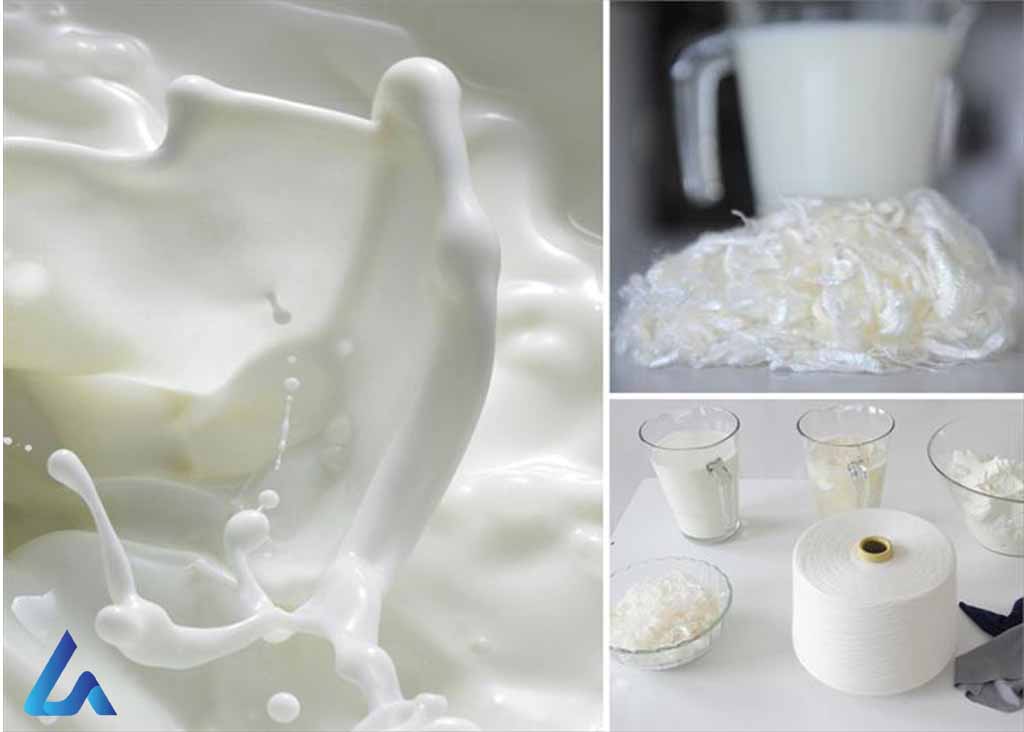
Milk Fiber was firstly introduced in 1930 in Italy & America to compete with wool. It is also known as Casein Fiber or milk wool. In this blog post, we will try to cover some key points on Milk Fiber Fabric.
Let’s start by knowing;
What is Milk Fiber?
Waste milk that is not fit for human consumption, is used to produce innovative fibers, called milk fiber or casein fiber. Milk fiber fabric is a blend of casein protein from milk and acrylonitrile, which is the same chemical that is used to make acrylic.
Milk that is disposed of still contains valuable ingredients, and also offers great potential for technical purposes.
You may read Textile Electrode| Definition, History and Advantages |
History of Milk Yarn
Milk yarn was first created in Italy and the USA in the 1930s and was called milk casein. It was made to compete with wool, but the production died during the Second World War.
At first, the production process used formaldehyde and used loads of water, resulting in a production method that was not profitable.
In the 1930s, Italy was leading the field in making Lanital, a wool look-alike textile that was made from milk. Production started with the separation of milk and cream. The cream is used to produce butter, and the skimmed milk is then coagulated to extract casein.
Historically, milk fiber yarn had been mixed with a number of substances to provide them with a cotton-like texture and tensility, but these days it is mostly made with a blend of casein protein and acrylonitrile. It is therefore not a true organic or natural fabric, as it is semi-synthetic.
Milk Fiber Manufacturing Process
Time needed: 3 minutes.
Now we know what milk fiber is and its history. Let’s know the manufacturing process of Milk Fiber.
There are two different ancient process. We will discuss the shorter process.
- Step 1:
Milk is fermented, then skimmed to remove any fat and dewatered.
- Step 2:
Casein fiber is extracted and the powdered milk is dissolved and purified. Any substances that are not casein, are removed.
- Step 3:
Powdered casein is immersed in the alkali to make a solution and passed through spinnerets
- Step 4:
Solution is immersed in sulphuric acid to remove the alkali.
- Step 5:
Fibers are then stretched and spun into milk fiber yarn.
- Step 6:
Then tanned with aluminum salts and formaldehyde to turn it into a usable textile for clothes made from food.
Properties of Milk Fiber Fabric
Because it is a regenerated protein fiber, milk fiber yarn reacts like wool and has many of the properties of wool.
- Milk cotton yarn is both comfortable and permeable.
- It has a soft, warm handle and is resilient like wool.
- It appears so similar to wool, that the difference can only be established with a burn test with wool.
- Naturally antibacterial and high hydrophilicity.
- Natural fiber with thermo-bonding properties and provides good thermal insulation.
- High moisture-wicking abilities, so it wicks moisture away from the skin.
- Can be washed on warm.
- Readily absorbs moisture and fibers become soft and swollen.
- Milk fibers loose their strength when wet, so handle it gently when wet and dry it flat.
- It is easily damaged by alkalies and mildew, so don’t keep it damp.
Application and Uses
The milk protein contains the natural humectant factor which can help to maintain the skin moisture, to reduce the wrinkles & to smoothen the skin – which may help to realize the people of taking a milk bath. The major usages of milk Fiber are as given below:
- T-Shirts
- Underwear
- Sportswear
- Ladies outerwear
- Sweaters
Future of Milk Fiber
Using milk fiber reduces the milk waste that is generated by dairies. Two million tonnes of milk is discarded each year just in Germany alone, imagine the global waste.
Scientific advances are also helping that companies are experimenting with the fabric. Milk waste offers new business opportunities to develop local textiles and apparel industry with clothes made from food. By using waste, the negative environmental impact of the milk industry can be reduced.
Conclusion
If you have any questions leave a comment below.
